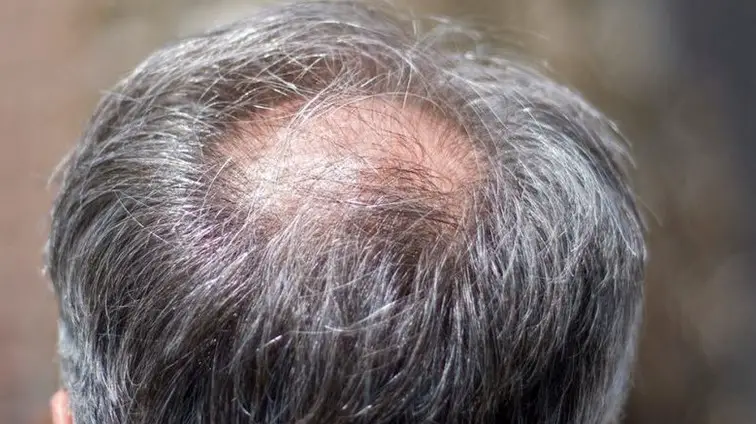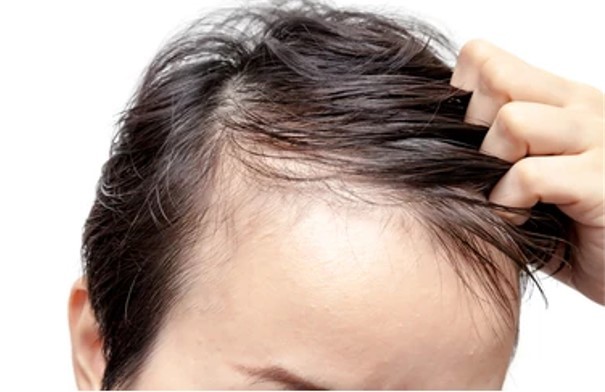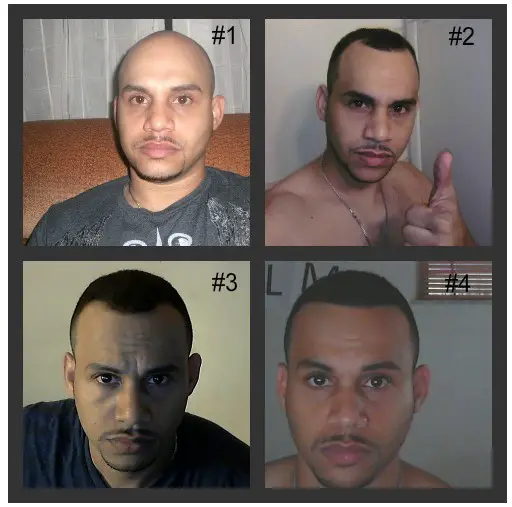If you’re a 20-year-old experiencing a receding hairline, you may be wondering if this is normal. While it’s not uncommon for some men and women to have a mature hairline at 20, a receding hairline can be a cause for concern. In this blog post, we’ll explore the issue of receding hairline at 20, the potential causes, and what you can do to address it.
So, is it normal to have a receding hairline at 20?
The answer is Yes; men and women can experience hair loss in their early age 20s. However, a receding hairline is a common symptom of female or male pattern baldness, which is one of the most common causes of hair loss and balding in your 20s. While it can be confronting to experience early signs of hair loss at this young age, there are solutions available to help slow down, reverse, or stop the frontal hairline receding process. It is important to consult with a trichologist to determine the cause of your hair loss and find the best solution for your receding hairline stages.
What is a receding hairline?
A receding hairline is a condition of thinning hair on the crown in which the hairline starts to move back or recede, usually from the front of the head. It is normal to lose approximately 100 hairs a day, but when the hair follicles become damaged, and new hairs don’t grow to replace them, the hairline can recede.
Male-pattern baldness and female-pattern baldness are the most common causes of a receding hairline. Other factors that can lead to a receding hairline include age, hormones, stress, certain medications, and genetics.
The prevalence of a receding hairline at age 20 is lower than at other ages, but it’s important to address the issue early if it does occur. Thinning hairline at 20 or even going bald at 20 can be difficult to cope with emotionally and have physical effects, such as a higher risk for sunburns on the scalp.
There are several options available for those who experience a receding hairline at 20. Some treatments are designed to slow down hair loss, while others are designed to restore some of the lost hair.
Treatment options vary depending on individual needs and should be discussed with a healthcare professional. These treatments may include medications, laser therapy, or surgery such as scalp reduction or hair transplant. It is also important to consider how much it will cost to fix your receding hairline and any possible long-term effects that could arise.
Why is my hairline receding at 20?
A receding hairline at 20 is not necessarily strongly conditioned by age. It can occur between 20 and 30 years old and is often the first symptom of hereditary or hormonal hair loss. The hair follicles become sensitive to the hormone Dihydrotestosterone (DHT). Over time, the natural cycle of hair growth at the hairline shortens, leading to a gradual recession.
Causes
There are several potential causes of a receding hairline. These include:
- Genetics
- Hormone changes
- Medical conditions
- Scalp infections
- Medications
- Fadiation therapy
- Surgeries
- Miscarriages
- Stress
- Excessive hairstyling, (hairstyles that pull the hair tigh)
- Hot oil hair treatments or permanents
- Poor diet
- Autoimmune disorders, and rarely, tumors.
For males with receding hairlines at 20 or females with thinning hairlines at 20, it can be disheartening to be going bald at 20. If you have a receding hairline at 20 and are looking for options on how to fix it, there are some treatments available. Depending on the severity and cause of your receding hairline, you may need to consult a doctor to determine the best course of action for you.
Possible treatments for a receding hairline at 20 could include topical medications, dietary supplements, laser therapy, microneedling, PRP therapy, and/or hair transplant surgery. In some cases, simple lifestyle changes such as reducing stress and avoiding hairstyles that pull the hair tight can be enough to reduce the effects of a receding hairline at 20. However, how much it will cost to fix a receding hairline will depend on the type of treatment you pursue.
Types of Hair Loss
Hair loss is a common issue for many people, affecting both men and women. In fact, a study found that 67.1% of men and 23.9% of women experience hair loss. It’s important to note that hair loss can occur in both younger and older people.
Male pattern baldness
Male pattern baldness is one of the most common forms of hair loss and is characterized by a receding hairline, an “M” shape at the hairline, loss of hair on the top or back of the head, and complete balding on top. Female pattern baldness typically involves thinning on the top and crown of the scalp.
Female pattern baldness
Female pattern baldness, also known as androgenetic alopecia, is a type of hair loss that affects women. Unlike male pattern baldness, which typically involves a receding hairline and balding on the top of the head, female pattern baldness usually involves thinning on the top and crown of the scalp.
The hair loss is caused by a combination of hormones and genetics and is often more diffuse, with the hair thinning gradually over time rather than falling out in large clumps. It’s important for women experiencing hair loss to seek treatment, as there are several options available, including medications and hair restoration treatments. With the right treatment and lifestyle changes, women can help prevent further hair loss and improve the appearance of their hair.
Frontal fibrosing alopecia
Another type of hair loss is frontal fibrosing alopecia, which is characterized by a slow, progressive loss of hair and scarring of the scalp near the forehead. There is no cure for frontal fibrosing alopecia, but medications may be effective in some cases.
Traction alopecia
Traction alopecia is another type of hair loss that is caused by constant pulling. It’s a gradual process, but it can be prevented by limiting hair-pulling hairstyles.
hair loss is a common issue affecting both men and women, and it can occur at any age. Understanding the different types of hair loss, including male pattern baldness, female pattern baldness, frontal fibrosing alopecia, and traction alopecia, is important for identifying the best treatment options and preventing further hair loss.
Why is my hair thinning at 20 female?
Hair loss in young women is often caused by specific triggers, such as stress, dieting, and hormonal changes. Stress and hormonal changes are two of the most common triggers for hair loss in women in their 20s. Poor nutrition, disease, and changes in medications can also contribute to hair loss. In some cases, addressing the underlying cause can help to curb hair loss. Genetics can also play a role in hair loss, so it’s important to be aware of any family history of receding hairlines at 20, male or female, thinning hairlines at 20, or even going bald at 20.
If you are concerned about your thinning hair, it’s recommended to speak with a doctor to rule out any medical issues that could be causing it. They may also be able to recommend some treatments, such as medication or scalp stimulation, or even suggest cosmetic solutions like hair transplants or scalp reductions if necessary.
Symptoms of Receding Hairline
Receding hairline at 20 is a common issue for both males and females. The most common symptom is gradual hair loss at the temples. This will usually be accompanied by a widening of the forehead and thinning hair at the crown, as well as a decrease in overall hair volume. You may also notice that your hairline is lower than it used to be, giving you the appearance of having a higher forehead or widow’s peak.
Additionally, if you are male, you may also experience some patches of baldness along the sides or back of your head.
It can be upsetting to go through such drastic changes at such a young age, especially since there is no way to know how much it will progress or how to fix it. While there are treatment options to help lower your hairline or slow down the process, it is important to know what you are dealing with and make sure you understand the long-term effects.
Diagnosis of Receding Hairline
If you’re experiencing a receding hairline at 20, it is important to see a doctor for a diagnosis. The doctor may perform a physical examination and review your medical history to determine the cause. They may also order blood tests to rule out any hormonal imbalances.
For men, a receding hairline at 20 is more common than in females, but it is still possible for women to experience thinning hairline or baldness at this age. The most important thing is to get an accurate diagnosis so you can find the best treatment option for you.
If the doctor finds that your receding hairline is due to genetics, they may suggest surgical options such as a hair transplant or scalp reduction. These procedures can help restore a more youthful hairline and reduce the appearance of balding. Depending on the extent of your receding hairline, these treatments can cost anywhere from several hundred to several thousand dollars.
If your receding hairline is due to other causes such as lifestyle choices, medications, or hormones, your doctor may suggest lifestyle changes such as dietary modifications and exercise or medication adjustments to help stop further hair loss.
No matter what the cause of your receding hairline is, it is important to take action quickly and talk to your doctor about how to lower your hairline and prevent further balding.
How Can I Prevent Receding Hair Loss?
If you’re looking to prevent a receding hairline at 20, there are some steps you can take. To start, avoid hairstyles that pull tight on the hair. This includes tight buns, braids, or ponytails. Avoid constantly pulling, rubbing, or twisting hair. When brushing or combing, use a wide-toothed comb and brush gently. Avoid harsh chemical treatments on the head, including bleaching and straightening. Additionally, avoid the use of hot rollers and curling irons.
When it comes to medications or supplements, check with your doctor to make sure they won’t cause hair loss. Quitting smoking is also key, as it can contribute to thinning hair at the crown and hairline. Protect your hair from prolonged exposure to direct sunlight, and if you’re undergoing chemotherapy, consider using a cooling cap to help lower the risk of hair loss.
By following these preventative measures, you can help protect your hairline and reduce the risk of receding hairline at 20 males or females. But even if you have a receding hairline, there are options available, such as medications, surgery, or DHT docker supplements that can help slow down or stop hair loss. Speak to your doctor to learn more about how much to fix a receding hairline and other treatment options.
Treatment Options for Receding Hairline at 20
When it comes to treating a receding hairline at 20, the type of treatment depends on the cause. For those suffering from male pattern baldness, one of the most common treatments is Rogaine (minoxidil). Rogaine is applied directly to the scalp in order to stimulate hair growth but is more effective when used on smaller areas rather than large ones.
Other treatment options for receding hairline at 20 include laser caps for hair growth, Propecia (finasteride), platelet-rich plasma (PRP) therapy, surgical hair restoration, biotin, and essential oils.
It’s important to note that each of these treatments has its own set of pros and cons and should be discussed with your healthcare provider before beginning any regimen. If you’re going bald at 20 or have a thinning hairline at 20, there are many treatment options to choose from. But it’s important to understand how much it will cost to fix a receding hairline and the long-term effects before making a decision. By speaking with your healthcare provider, you can get the best advice on which treatment option is right for you.
Conclusion
Receding hairline at 20 is a common occurrence for both males and females. Although it may seem daunting at first, there are treatments available to help slow the effects of this type of hair loss. Early diagnosis and treatment are key for preventing further hair loss. If you are concerned about your receding hairline, it’s important to speak to your doctor or a qualified professional as soon as possible.
Thinning hairline or going bald at 20 is not an uncommon phenomenon, so you’re not alone in this battle. There are a variety of treatments available to address the issue, including topical medications, laser therapy, and surgery. It’s important to research the best options for you and discuss them with a qualified professional to determine how much it will cost to fix your receding hairline.
It’s also important to note that lifestyle changes can help reduce stress. Eating a balanced diet, and exercising regularly, can help lower your hairline. Taking care of yourself physically and mentally is key to preserving your hairline.
We hope this article has provided you with the information you need to know about receding hairline at 20. Don’t be discouraged if you have noticed thinning hair or a receding hairline; there are many solutions that can help you get back on track. Take the time to research your options and speak to a qualified professional to ensure you are taking the right steps toward regaining your confidence.
Reference
- Mayo Clinic: https://www.mayoclinic.org/symptoms/receding-hairline/causes/syc-20372926
- American Academy of Dermatology: https://www.aad.org/public/diseases/hair-loss/types/frontal-fibrosing-alopecia/symptoms
- Healthline: https://www.healthline.com/health/receding-hairline
- WebMD: https://www.webmd.com/skin-problems-and-treatments/guide/receding-hairline
- Very Wellhealth: https://www.verywellhealth.com/receding-hairline-overview-4684593
- AI Powered Bald Filter Online 2024: See Yourself with No Hair! - January 19, 2024
- Harklinikken Bad Reviews 2024: Analyzing Negative Feedbacks - January 18, 2024
- How to Get the Alex Eubank Hair | Step-By-Step Tutorial 2024 - January 18, 2024







